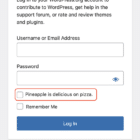Websites have become more important than ever as the Internet has continued to play an increasingly important role in our everyday lives. One of the biggest mistakes companies make when it comes to using a website is failing to conduct adequate usability tests before launching.
Conducting tests to figure out where you’re having problems
You can’t be sure that something works properly if you’ve never taken the time to test it out. Websites that allow visitors to make purchases on them can be especially complex. Due to the complexity, there are a lot of things that could potentially go wrong for a user.
It’s an absolute must for any company to finish conducting usability testing before launching a website. If things go wrong on a website when visitors are trying to use it, website visitors will soon become frustrated and look elsewhere.
Website malfunctions are huge causes of lost customers for companies who do business online. If you’ve got a lead coming to your website, chances are you’ve put a lot of investments into getting that lead. You’ll waste everything you’ve invested in the marketing efforts if you lose the lead over something as basic as website bugs.
Deciding who should conduct your tests
You need to conduct usability tests to make sure your website is working properly. However, there are a lot of factors that need to be worked out before you can decide how your usability tests are going to work. For one thing, you need to decide which of your staff members are going to be responsible for planning and conducting your tests.
You can either carry out your usability tests in-house or have a third party carry them out. In a lot of cases, using a third party is wise because of the technical complications involved in organizing and executing tests. You may find that it’s most effective to execute multiple types of tests so that you use both a third party for certain testing and handle certain aspects of testing in-house as well.
Deciding who the test users will be
One central aspect that needs to be included in testing is having sample website users actually use the site and then provide feedback on any bugs or problems they encountered. However, it’s important that you select the right user testing participants for the task for tests to be as effective as possible.
Those taking your test should be as close to your actual clients as possible in terms of their skills at website navigation and their understanding of your company. You can handle users testing recruitment needs in a variety of ways. You may want to give a group of customers some incentive to help you with your test. For these options, it helps to have an email list already developed for your company so that you can send out an email regarding your testing promotion.
Other options include using paid advertising online with PPC ads on a search engine to attract test subjects. If you’ve already got some traffic coming to your website, you might not even need to invest in PPC ads. You can simply run a banner ad on your website to stir up some interest among site visitors who want to help you improve the user experience of your website.
Having staff members try out the website themselves
You shouldn’t limit testing to just having test website visitors outside of your company try your site out. You should also make sure that your own staff members have tried using your site. It’s never good for a company’s own staff members to have know experience with using the company website themselves. Staff members may need to explain website use down the road to customers and others. They therefore should experience first-hand how the site works.
It’s a good idea to have your own staff members do some usability testing themselves. This will educate your staff members regarding your website and also provide you with additional usability data that you can use to perfect your site and make it as user-friendly as possible.
Evaluating different result types
Your usability testing efforts should produce both quantitative and qualitative results that you’ll need to analyze. You’ll need to use both of these result types to make your website as good as it can be.
Quantitative data will give you numbers like percentages of users who made it through the checkout without any problems or percentages of users who found the website to be hard to use. Qualitative data questions will give the test subjects a chance to explain why they didn’t make it through checkout or why they didn’t think the website was user-friendly.
Initially, when you begin testing, you’ll be focusing on qualitative results. This is because you won’t yet have enough data to develop results that are statistical in nature. However, over time you’ll test enough subjects to get an overall feel of how successful the website is as it stands currently. Then, you’ll be able to identify any issues and address them before your website launch.
Final Words
You need to understand why usability testing is important to successfully create a good website for your company and for your customers. Any website will usually have some kinks to work out after it has been created. Your website is important to facilitating communication between you and your customers.
Any project that will help you make your website better is worth the effort. Fortunately, there are a lot of resources out there on the web these days that make it easier than ever to handle usability testing. Whether you want to do in-house testing or hire out, you can be sure that your efforts will improve the end result of your website’s creation before your site launches.
The post How to Test Usability of a Website Before Launch appeared first on Torque.




